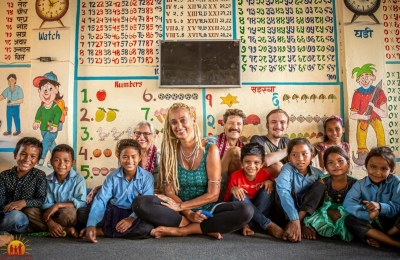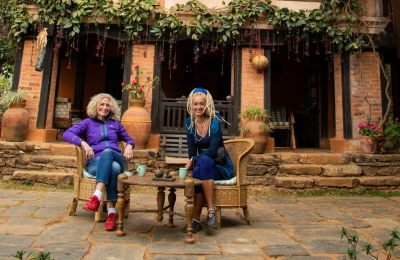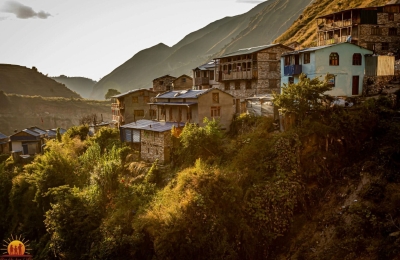Killer in the Kitchen
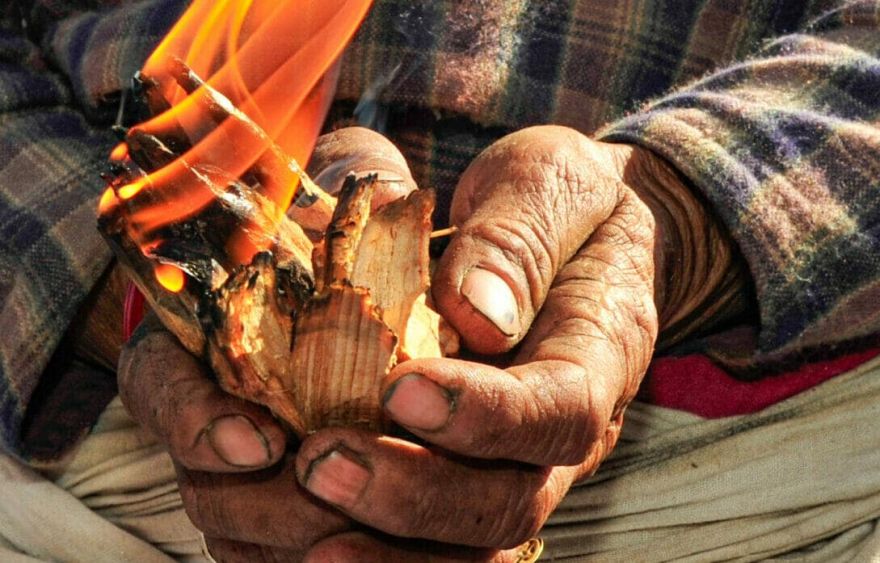

Madhav P. Bhatta, Professor of Epidemiology and Global Health at Kent State University in the USA, was born and raised in a rural mountain village in Baitadi district in far western Nepal. Madhav Bhatta received his Master of Public Health (Epidemiology and Global Health) from the University of Pennsylvania and earned his PhD in Epidemiology from the University of Alabama at Birmingham, USA.
Why open fire should stay outside
When our immediate neighbors light their backyard wood burning firepit to enjoy cool Ohio autumn evenings with a sip of wine and good company, I sequester myself in the house with windows shut to prevent a coughing fit that I will inevitably have from inhaling firewood smoke. Of course, when our neighbors invite us to join them, I apologetically decline their invitation because I do not want to ruin their peaceful social evening with my incessant cough.
For a man who spent most of his childhood in a heavy haze of woodfire smoke in a poorly-ventilated-tiny-two-room-stone-and-mud hut in the mountains of western Nepal, it is ironic that my body cannot tolerate wood smoke even outdoors. Or maybe perhaps, it is because of the persistent childhood exposure to heavy smoke, not in spite of it, that my body developed an immune response to wood smoke, and now every time I get exposed to it, it responds as if it is under heavy attack and releases chemicals that prompts my coughing fit.
Luckily, now I have the luxury to avoid exposure to wood smoke if I do not want to endure the coughing fit. Choosing to forgo my exposure to woodfire smoke is inconsequential (except for missing the wine social by the fire on my neighbor’s patio, of course). I will neither go hungry nor be cold, i.e. I will survive. We cook our food and heat our home in the United States using natural gas and electricity, and light our homes using electricity—two ‘clean’ energy sources that do not produce heavy smoke as a result of incomplete combustion.
80 percent of the rural population is heating with wood and other solid fuels
However, we did not have the luxury of foregoing firewood for a clean energy source for cooking our food— a necessity of life- in my childhood in rural Nepal. Unfortunately, many decades later, many people in Nepal, especially in rural communities, still depend on wood, dried dung, or crop residue to cook their meals and to keep warm during cold winter nights in their poorly ventilated homes. In fact, over 80% of households in rural Nepal still rely on these solid fuels for household energy, which often are burned in open fires or in rudimentary stoves.
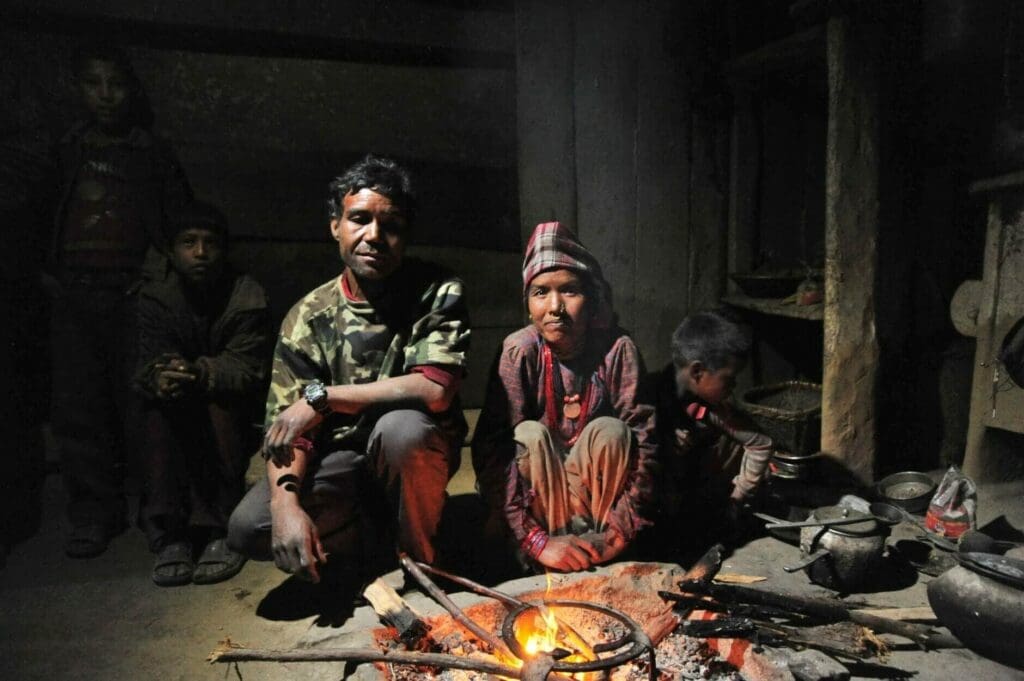
When a solid fuel is burned in an open fire or a traditional three-stone hearth, it combusts inefficiently spewing heavy smoke, which is a toxic brew of particulate matters (soot) and chemicals. Chronic exposure to indoor smoke from burning solid fuel for cooking, starting in utero, has a myriad of life-long health effects including death. That is why cooking on an open fire using solid fuel (wood, dried dung, coal, and crop residue) is also referred to as the ‘Killer in the Kitchen’ for its deadly effect. In fact, according to the World Health Organization (WHO), every year an estimated 3.8 million people globally die prematurely from illnesses including pneumonia, stroke, heart attack, chronic obstructive pulmonary disease, and lung cancer related to exposure to smoke from the use of solid fuels for cooking. An estimated 113 deaths per 100,000 population or about 33,000 deaths annually in Nepal are attributed to indoor air pollution, which is about 12% of all deaths in the country.
Women and children are particularly affected
Darüber hinaus wird die Luftverschmutzung in Innenräumen mit weiteren gesundheitlichen Folgen in In addition, indoor air pollution from solid fuel use for household energy is also linked to several other health effects including low birth weight, tuberculosis, cataracts, and nose and throat cancers. Women and children are disproportionately affected by indoor smoke since the household cooking task primarily falls to women, and children, especially the younger ones, are indoors when cooking takes place in a home. For example, according to the WHO estimates almost half of pneumonia deaths among children younger than 5 years are attributed to inhaled soot (or fine carbon particles) in indoor smoke from burning of solid fuels.
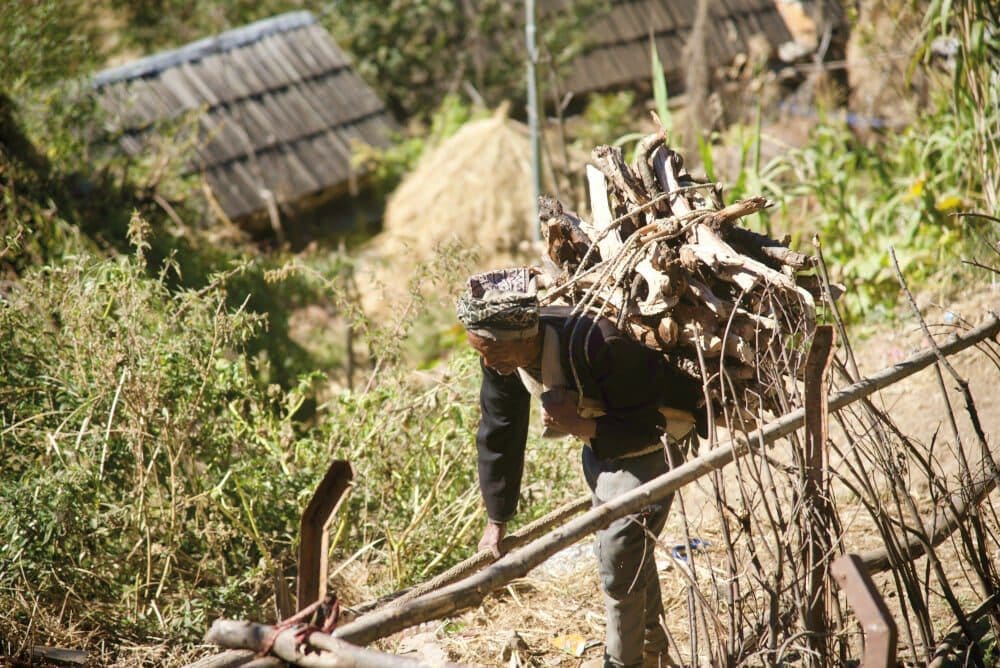
The use of solid fuel for cooking has additional health and social impacts beyond those caused by the exposure of the toxic smoke. Again, woman and children are most vulnerable to these health and social consequence of indoor air pollution. The chores of firewood collection and transportation primarily falls to women and children, especially girls, and increase the risk of injuries and musculoskeletal damage from the heavy burden of carrying the load, falls, or wild animal attack. Women and children also spend a considerable amount of their time in this activity, which instead could be spent in other economically productive activities or school. Yet, the collection of firewood must take precedence because cooking food is essential for survival. In the context of the difficult terrain of remote places like Mugu in the mountains of Nepal, this task is even more challenging, riskier, and time consuming. Because practically every family relies on firewood for cooking, every family is impacted by this activity physically, socially, and economically in places like Mugu, Nuwakot, and Chitwan in Nepal.
One of many problems
The issue of indoor air pollution and its impact, like many other challenges in rural Nepal, may seem daunting, and frankly hopeless, especially when faced with the multitudes of other problems in rural Nepal such as the lack of access to safe drinking water and improved sanitation, poor nutrition, high levels of maternal and child disease and deaths, and high child mortality amidst economic deprivation. The ideal solution to the problem of indoor smoke is to use clean sources of fuel like electricity, natural gas, or liquid petroleum gas (LPG), and relegate wood burning to the yard firepits to keep us warm on occasional chilly autumn evenings while we sip wine. We know that is not possible in the short run. However, addressing this daunting public health problem is key to improving other challenging health problems previously mentioned due to their interconnectedness. For example, if you want to reduce childhood deaths from pneumonia, address the problem of indoor smoke from burning solid fuel for cooking. All these health issues are inextricably linked and must be addressed in concert with each other.
Local Action With Global Consequences
Beyond the individual and household impact, the use of solid fuels for cooking in open fires and traditional stoves has serious local environmental and global effects, since inefficient combustion in these devices emit powerful climate change pollutants such as carbon particles and methane. But we cannot seriously expect a family in Mugu to change their practice for their concern about climate change and the survival of the planet, if they neither have the means, know-how, or methods for a cleaner and safer alternative, and their own survival depends on using wood to cook and keep warm. It is unrealistic to think that rural communities like Mugu can transition to burning energy sources such as LPG or electricity in the short term. We also cannot continue to have these communities suffer from the effects of a preventable public health hazard.
Smokeless Stoves – a Simple Solution
Like many other public health problems that have elegantly ‘simple’ solutions, we do have such solutions for indoor smoke pollution that when applied can have a significant impact on addressing the problem. There are many versions of inexpensive and improved cookstoves that burn the solid biomass fuel much more efficiently, thus producing a much lower levels of smoke. With an added feature of an external ventilation system, these improved cookstove can reduce the indoor air pollution substantially, and many of these improved cookstoves can be made using local material and human resources and appropriate technology. It is a matter of an organization like Back to Life, e.V. to serve as a catalyst to muster the change needed at the local level to address the problem. However, it will not be enough to simply provide the means and methods to the local communities for people to adapt new ways. It requires changing deep-rooted perceptions and behaviors as well.
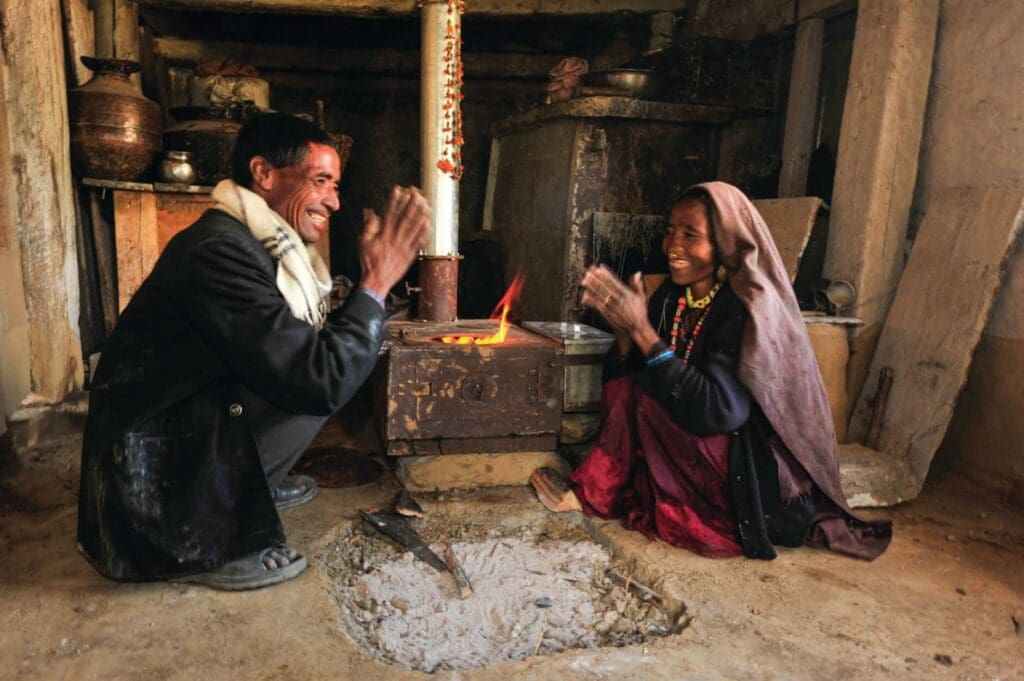
Recently in a video conversation with my eldest brother, who still lives up in the mountains of western Nepal, I noticed the thick smoke in the kitchen from the fire in the traditional three-stone hearth. I knew that LPG gas was now available there, and there were more efficient solid fuel cookstoves available as well. Out of curiosity, I queried why they still use the traditional stove since LPG and improved cookstoves were available and they certainly could afford them, and the indoor smoke was bad for health. He told me that they did have LPG stove and used it for cooking, but he preferred to cozy up to the traditional hearth in the chilly autumn evening in the mountains of Nepal. Perhaps I should have suggested he build an outdoor patio and a firepit, so he can have the best of both worlds.
